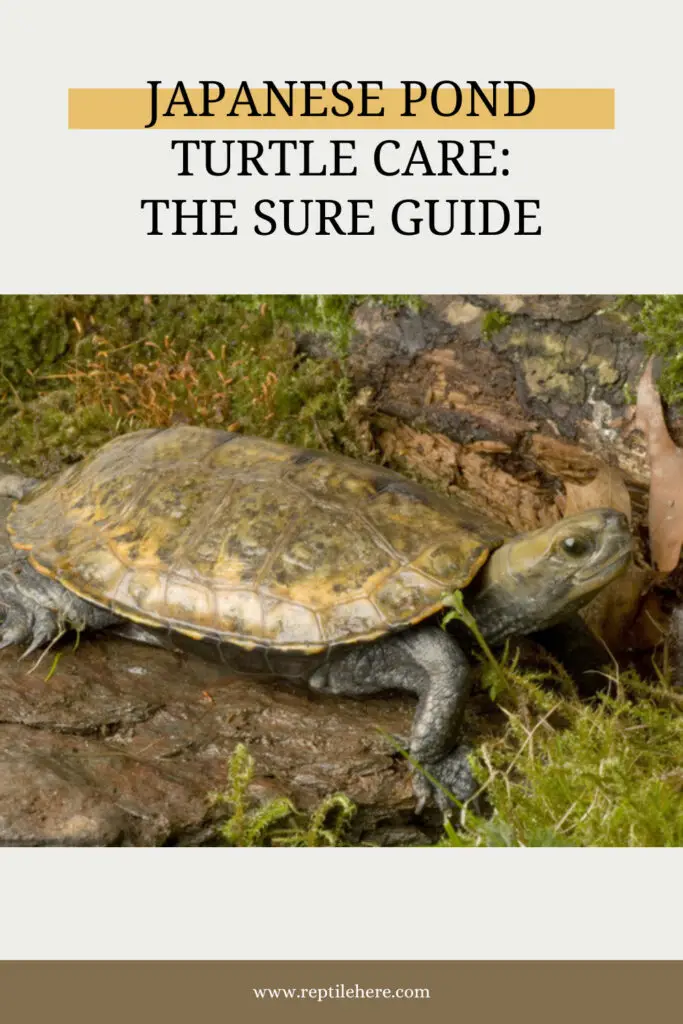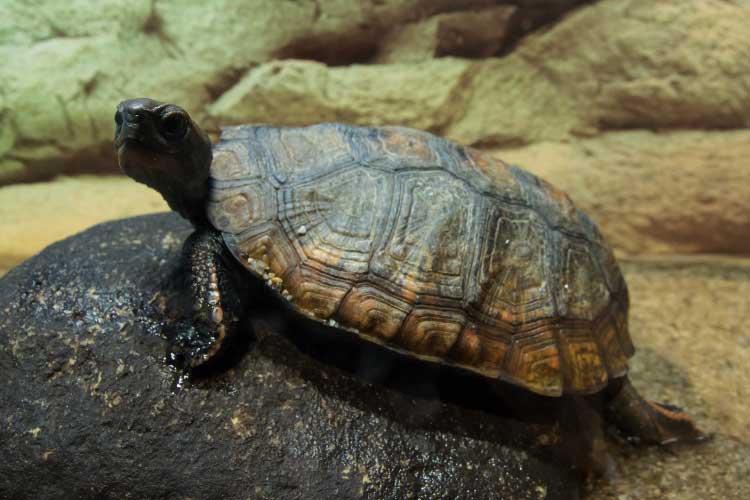Japanese Pond Turtle Care: The Sure Guide
The Japanese pond turtle, also known as the Japanese mud turtle or the Mauremys japonica. This is a small, semi-aquatic turtle native to Japan and Korea. They are generally docile and can be kept as pets.
But do you have any idea about Japanese pond turtle care? Most importantly, you need to ensure a clean and warm environment with a balanced diet for this species. Thus, the basking area should be with UVB lighting to help metabolize calcium and synthesize Vitamin D.
Overall, as they are relatively small, they do require proper care to stay healthy and happy. So this article will be a guide for your Japanese pond turtle care in detail. Follow this to know all.
Basic Information About Japanese Pond Turtle
Contents
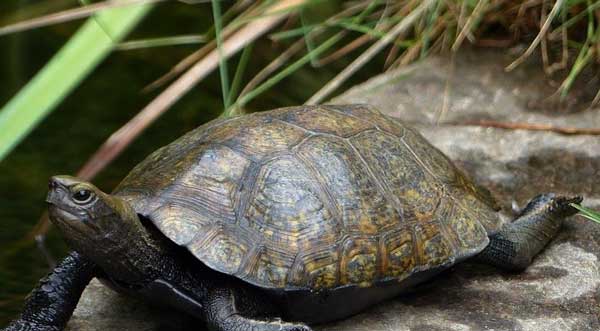
The table below shows some basic information about the Japanese pond turtle
| Scientific Name | Mauremys japonica |
| Common Name | Japanese pond turtle, Japanese pond terrapin, Japanese stone turtle |
| Adult Size | 15 cm to 10 cm |
| Max Size | 20 cm (8 inches) for females and 14 cm (5.5 inches) for males |
| Life Span | 20 to 40 years |
| Diet | They’re naturally omnivorous, but sometimes carnivorous |
| Range | They’re found mostly in rivers, marshes, streams, and ponds in Japan |
| Behaviour | They are generally peaceful and can coexist well with other aquatic animals in a community tank. The male adults may become territorial during mating season. You can keep the Japanese pond turtle as pets |
| Clutch Size | 4 clutches, with 3 to 8 eggs |
| Legal to keep in the USA | Not legally exported, and difficult to be owned as pets in the USA |
| Extinction Status | Not endangered species, not extinct too, but near threatened because of possible loss of their habitat |
Are Japanese Pond Turtle Easy To Take Care Of?
Care of Japanese pond turtles can be relatively easy if you are prepared to provide them with the proper environment, diet, and healthcare. However, they do have some specific needs that must be met to thrive.
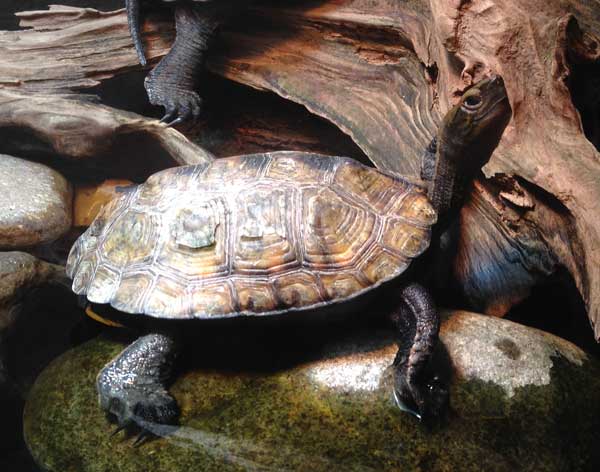
How To Take Care Of A Japanese Pond Turtle?
Japanese pond turtles are known for their ability to swim and bask in the sun and can make a beautiful addition to a backyard pond or aquarium. Here is the Japanese pond turtle care sheet
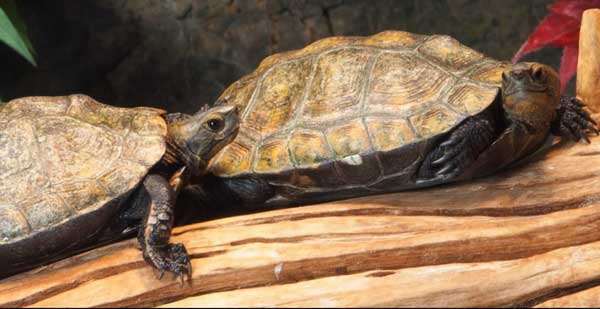
Provide a suitable enclosure
Japanese pond turtles need plenty of room to swim and bask, so it is important to provide a large enough enclosure. A pond or tank with a minimum size of 100 gallons is recommended for a single turtle, with an additional 50 gallons for each additional turtle.
Thus, the enclosure should also have a basking area and a UVB light source to provide the necessary heat and UVB rays.
Offer a varied diet
Japanese pond turtles are omnivorous, meaning they need a diet that includes both plant and animal matter. Offer a variety of leafy greens, vegetables, and protein sources such as worms, crickets, and fish. It is also important to provide a calcium supplement to help prevent shell deformities.
Keep the water clean
It is important to keep the water in the turtle’s enclosure clean and well-filtered to prevent the buildup of harmful bacteria and ammonia. Perform regular water changes and use a high-quality filter to maintain clean, clear water.
Handle your turtle gently
Japanese pond turtles can be skittish and may try to escape if they feel threatened, so it is important to handle them gently and carefully. Never pick up a turtle by its tail, as this can cause injury. Instead, gently lift the turtle by supporting its body with both hands.
Common diseases of the Japanese pond turtle and how to care for a sick turtle
They are prone to certain health issues. Some common diseases and health problems that can affect Japanese pond turtles include:
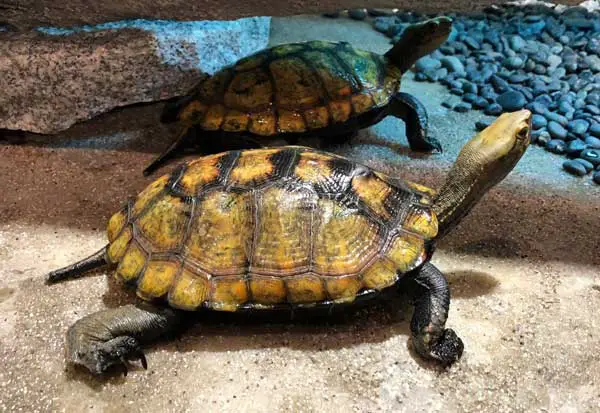
Respiratory infections
These can be caused by bacteria or viruses and may manifest as discharge from the nostrils, difficulty breathing, or lethargy.
Shell infections
These can be caused by bacteria or fungi and may manifest as soft or discolored areas on the turtle’s shell.
Nutritional deficiencies
Japanese pond turtles require a balanced diet to stay healthy. Lack of essential nutrients can lead to a variety of health problems.
Metabolic bone disease
This is a condition that results from a lack of calcium or vitamin D in the diet, which can lead to weak or soft bones.
Digestive problems
These can be caused by a diet that is too high in protein or fat, or by intestinal parasites.
On top of that, to care for a sick turtle, consider consulting a veterinarian who is experienced in treating reptiles. The veterinarian will be able to diagnose the specific health problem and recommend the appropriate treatment.
In the meantime, it is important to keep the turtle in a clean and warm environment and to provide it with a balanced diet. It is also important to follow the veterinarian’s instructions for administering any medications or treatments.
Can You Keep Japanese Pond Turtle As Pets?
Yes, you can keep Japanese pond turtle as pets. However, it’s needful to consider whether you are prepared to provide the proper care and environment for this type of turtle.
If you want to beep a Japanese pond turtle as a pet, you must make findings and make sure you can provide the necessary care and attention it needs.
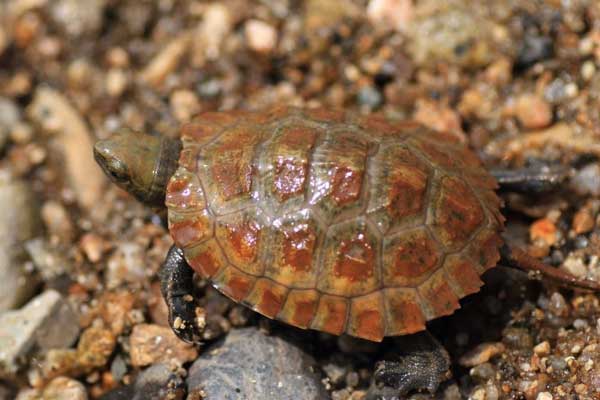
What Does A Japanese Pond Turtle Need In A Tank?
The Japanese pond turtle needs some essential things to help them thrive well. Hence, here are some things to consider when setting up a tank for a Japanese pond turtle:
- Size: Japanese pond turtles can grow to be quite large, with some individuals reaching up to 12 inches in length. As a result, they will need a spacious tank that is at least 75 gallons in size.
- Substrate: A suitable substrate for a Japanese pond turtle tank could be a mixture of sand and soil or a commercial substrate specifically designed for reptiles.
Avoid using loose materials like wood shavings or pine chips, as these can be ingested by the turtle and cause blockages in the digestive tract.
- Water: A large, shallow water area should be provided in the tank, as Japanese pond turtles are aquatic animals that spend much of their time in the water.
The water should be kept clean and properly filtered as well. So the turtle should have easy access to the water to allow for proper swimming and basking.
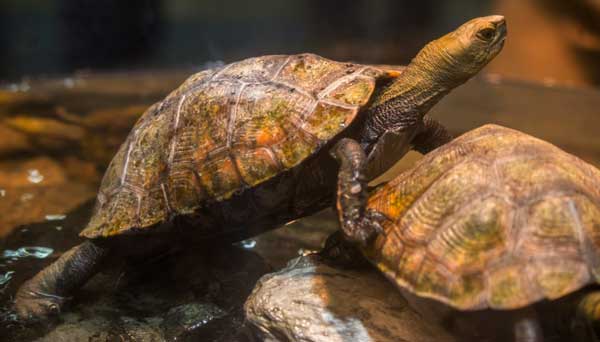
- Lighting: Japanese pond turtles need access to natural sunlight or artificial UVB lighting to help them synthesize vitamin D3. This is essential for proper calcium metabolism. UVB lighting should be provided for 12-14 hours per day.
- Temperature: Japanese pond turtles need a temperature gradient in their tank, with a basking area that is kept at around 85-90 degrees Fahrenheit and a cooler area that is kept at around 70-75 degrees Fahrenheit. A thermostat can be used to help maintain the proper temperatures.
- Diet: Japanese pond turtles are omnivorous and will need a varied diet with both types of food. Commercial turtle food can be supplemented with fresh vegetables, fruits, and small amounts of protein sources like worms, crickets, and lean meats.
Final Words
In this article, we’ve explicitly discussed how to care for your Japanese pond turtles. These tender animals are generally easy to care for and make good pets for beginner turtle keepers. They are hardy animals that can tolerate a wide range of water temperatures and conditions.
Also, ensure to visit the vet immediately, once you discover any health disorder. sufficient care and attention. Overall, Japanese pond turtles can be rewarding domestic animals for those who are willing to put in the time and effort to care for them properly.
